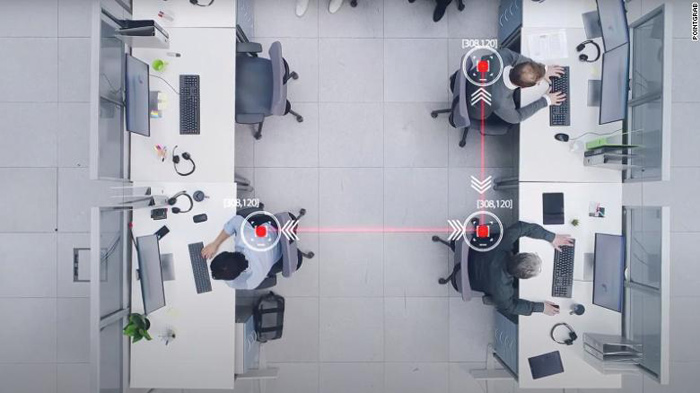
1.What can we learn about PointGrab?
A It has been dedicated to outdoor monitoring.
B It established industry standards for monitoring.
C It has developed a sensor to monitor social distancing.
D Its new product gets inspiration from the smoke alarm.
解析:选C。细节理解题。根据文章全文内容可知,PointGrab这家以色列公司生产的智能传感器可以帮助管理者解决办公室员工如何保持社交距离这一难题,故选C。
2.Which has the closest meaning to the underlined word “optimize”?
A Select.
B Recommend.
C Determine.
D Maximize.
解析:选D。词义猜测题。根据文章第三段最后一句PointGrab CEO Doron Shachar says it was one of a series of innovations that helped Deloitte fit 30% more people into 3% less space. PointGrab公司的首席执行官多伦·沙哈尔说,这是该公司的一系列创新项目之一,帮助德勤公司在比原来小3%的空间内安置了比原来多30%的人员。换句话说该项目使得空间利用最大化,由此推断PointGrab公司的技术优化员工使用办公空间的方式,故选D。
3.What’s the result of the use of PointGrab’s products?
A Office efficiency will be greatly improved.
B It can keep track of the whole working process.
C It will improve the availability of office space.
D It makes the staff work at ease without being disturbed.
解析:选C。推理判断题。根据文章第三段第二句PointGrab's sensors were connected to screens in the building to show the availability of desks and shared areas in real time.可知,PointGrab的传感器和建筑物内的屏幕相连,实时显示可供使用的办公桌数量和共享空间。由此推断PointGrab的产品可以提高办公空间的利用率,故选C。
4.What’s the working staff’s anxiety?
A The activity space in the workplace has been reduced.
B Their privacy will be revealed when they are at work.
C The change of working space has affected work efficiency.
D They cannot work normally because they were under monitoring.
解析:选B。推理判断题。根据文章最后一段可知,员工也许不喜欢被监视,不过PointGrab表示,传感器不会记录任何影像或可识别的特征,传感器不会侵犯人们的隐私。由此推断员工的焦虑是担心自己的隐私被泄露,故选B。